[EDITOR'S NOTE: Before you jump into this fabulous tutorial, one small housekeeping note related to the scheduling of Manu's next post . . . Due to very busy work and personal schedules, Manu and I have decided to take a one-month posting break to help ease our workloads. Her tutorials will resume in July! In the meantime, enjoy this one and those from Aproned Artist, which will remain on the same monthly schedule. ~JMU]
 This cookie project is meant for a dad who plays or loves to watch tennis (or for anyone who does). I used the Needlepoint Mat from SugarVeil® (aka @SugarVeil) to make edible lace for the racket strings and the net for the tennis court. The same grid dimensions work well for both cookies, and edible lace results in a clean look that can be tough to achieve by piping the grid by hand. I made my first tennis cookies in 2017 to fill a cookie box for Father’s Day (both pictured below). You’ll find the DAD box tutorial here.
This cookie project is meant for a dad who plays or loves to watch tennis (or for anyone who does). I used the Needlepoint Mat from SugarVeil® (aka @SugarVeil) to make edible lace for the racket strings and the net for the tennis court. The same grid dimensions work well for both cookies, and edible lace results in a clean look that can be tough to achieve by piping the grid by hand. I made my first tennis cookies in 2017 to fill a cookie box for Father’s Day (both pictured below). You’ll find the DAD box tutorial here.
- 1 (4.5 x 11-cm/1 3/4 x 4 3/8-in) tennis racket cookie
- 1 (6.5 + 9.5 x10-cm/2 1/2 + 3 3/4 x 4-in) trapezoid cookie (Note: The trapezoid dimensions are listed as b1 + b2 x h, where b1 refers to the shortest of the two shortest sides of the trapezoid; b2 refers to the longest side; and h refers to the height.)
- 1/4 package SugarVeil® White Confectionery Icing
- Gel food colorings to tint Confectionery Icing: grey, leaf green, lemon yellow
- Large paint brush and cornstarch, for dusting mat
- SugarVeil® Needlepoint Mat
- Small offset spatula (or equivalent)
- SugarVeil® Confectioners' Small Spreader (or any spreader, but this one eases the job)
- Damp cloth (or paper towels)
- Scissors
- Royal icing:
- White piping-consistency, in pastry bag with PME #1 tip (or equivalent)
- White and leaf green flood-consistency, in tipless pastry bags with openings equivalent to PME #3 tip
- Clay-colored thick-consistency royal icing, in tipless pastry bag with opening equivalent to PME #3 tip (I mixed red, dark green, and egg yellow to get the clay color, as clay is my favorite surface on which to play tennis, but you can pick your favorite color instead.)
- Flat paint brush
- Fine paint brush and white and green gel food colorings
- Scribe tool and ruler
- Tennis ball candies or yellow fondant, for staging (I used the candies for my oldest projects above; for this project, I used yellow fondant.)
** Disclosure **
This tutorial is not sponsored by SugarVeil® or any of the brands mentioned above. Michele Hester and Julia M. Usher designed the Needlepoint Mat in 2016. I discovered SugarVeil® and purchased my Needlepoint Mat in 2017 to participate in Cookie Connection's Practice Bakes Perfect Challenge #21 - Lace. I have been using it ever since in many of my cookie projects, inspired by Julia M. Usher’s and Michele Hester’s videos.
Step 1: The cookies
As noted in the supplies list above, this project is comprised of two cookies: a tennis racket and a trapezoid cookie for the tennis court, both depicted below. Dimensions for these cookies are also given in the supplies list.
If you have been following my project tutorials for any time, you know that I love to hand-cut my cookies, but hand-cutting a tennis racket shape is not an option, as it is hard to maintain the symmetry of the racket head. I recommend that you get a cookie cutter, which will also be used in Step 2k to emboss the lace.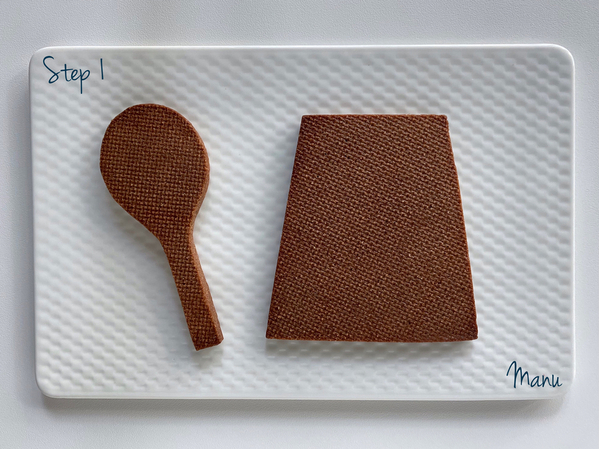
Step 2: Prepare edible lace for racket strings and net
a. and b. Combine 1/4 package (32 gm) SugarVeil® White Confectionery Icing with 5 teaspoons (25 ml) water in the bowl of an electric mixer. Mix for 4 minutes following the directions on the package, or here or in this SugarVeil® video. You’ll get a gooey white icing that can be tinted with gel or powder coloring. Divide the icing into four parts, and tint it using less than a drop of gel food coloring. You will need about 1/2 tablespoon grey, 1 tablespoon leaf green, and 1 tablespoon yellow. Leave the remaining icing white.

c. Use a large paint brush to dust the SugarVeil® Needlepoint Mat with cornstarch. Dusting will help to later ease the lace removal, though I actually forgot to dust the mat for this project, and the lace came out easily anyway. Use a small offset spatula (or equivalent) to apply a layer of grey icing over a small section of the mat. Push the icing into the crevices as you apply it.
d. Now use the SugarVeil® Confectioners' Small Spreader to evenly spread the icing on that portion of the mat. To avoid scraping off the icing, keep the spreader at a low angle to the mat, and, with your fingers spread apart, apply firm, even pressure to push the icing into the grid pattern. I spread the gray icing over about one quarter of the mat, as only a small amount is needed for the tennis court net.
e. Clean the spatula, and use it again to apply diagonal lines of white, yellow, and green Confectionery Icing on the remaining portion of the mat. Again, take care to push the icing into the crevices. To ensure clean work, I always try to use as little icing as possible, adding more only as needed. The tennis strings will be cut from this area, and I used three colors to give them an ombré effect.
f. Once again, use the Confectioners' Small Spreader to evenly spread the icing on the mat, just as instructed in Step 2d.
Put the mat on a baking sheet, icing side up, and place in a 200℉ (93°C) oven for 4 minutes. If the icing still feels sticky after the recommended time, place the mat back in the oven for about 1 minute, and test it frequently. The icing should feel just dry to the touch when it is ready to remove from the oven.
SugarVeil® Confectionery Icing can be also air-dried. Air-dried lace generally stays flexible longer than oven-dried lace. Drying time in this case depends on the icing thickness, as well as ambient temperature and humidity, and can take from a few to many hours. It is very humid where I live, which is why I always opt to oven-dry. [EDITOR'S NOTE: And I always prefer to air-dry! It's proved too easy for me to over-dry the icing in the oven, which can cause it to crack when removing it from the mat. ~JMU]
g. Remove the mat from the oven, and gently wipe the icing surface with a barely damp cloth, using a circular motion. (I used damp paper towels.) Wiping helps to remove any residual film on top of the mat and not in the crevices, which will result in a cleaner grid, without any filled holes that should be open! It also restores moisture to the lace that the oven depleted. (After wiping, the lace will get a touch sticky again.) Also wipe well on the outer edges of the design, to facilitate the eventual separation of the lace from the mat. Now, let the mat sit about 10 minutes (at ambient temperature) until the lace no longer feels tacky.
h. The needlepoint grid is ready to be un-molded when it separates easily from the mat along the edges and does not stretch out of shape.
i. Although you may be tempted to peel the lace from the mat, you want to do the opposite. Place the mat face down on a piece of parchment paper, and carefully peel the mat away from the lace. Rather than pulling the mat up and away from the lace, which can tear it, push the mat downward with your thumb against your work surface, while peeling back the mat. Here’s a good reference video for lace removal.
j. Once removed from the mat, the grid should be quite flexible and ready to cut! Count out four and a half squares from the gray end, and cut the grid crosswise at this point to create the net.
k., l., and m. Find an area of the white, yellow, and green section of the lace that contains a good distribution of all three colors. Place your racket cookie cutter over that area, and press to emboss the lace. Cut along the embossed line to create the racket strings.
Note: If you aren't going to decorate your cookies right away, store the lace between parchment paper in a sealed plastic baggie so that it doesn't dry out.
Step 3: Decorate tennis racket cookie
a. Outline the racket cookie using white piping-consistency royal icing and a PME tip #1 (or equivalent), and then flood the interior using white flood-consistency royal icing and a Wilton #3 tip (or equivalent). Let the icing dry completely.
b. Place the ombré lace that you cut in Step 2m over the head of the racket. Trim its edge if it extends beyond the cookie.
c. Lift one edge of the lace, and moisten its back side using a damp flat paint brush. Press the moistened lace onto the icing to "glue" it in place.
d. Keep lifting portions of the lace and repeating Step 3c until the grid has been completely glued to the cookie. I've found this method to be the best way to apply the grid without it sticking to my fingers. (Though dust your fingers with cornstarch anyway!) It will also ensure that the lines of the grid stay straight and in alignment with the rest of the cookie (as in a real tennis racket).
e. Outline the cookie once again, using white piping-consistency royal icing and a PME tip #1 (or equivalent).
f. Using the same icing and tip, pipe an oval on the racket head to cover the edge of the grid. It should be a couple of millimeters (about 1/16 inch) away from the outline piped in Step 3e.
g. Still using the same icing and tip, pipe an upside down triangle directly under the grid to simulate the open area on the shaft of most tennis rackets. Pipe a short crosswise line to demarcate the handle and four or more short diagonal lines to suggest a grip on the handle.
h. Use white flood-consistency royal icing and a Wilton #3 tip (or equivalent) to flood half of the thin outlined oval space around the grid, and alternating sections of the handle grip.
i. Immediately use green flood-consistency royal icing and a Wilton #3 tip (or equivalent) to flood the rest of the oval around the grid, so that the green icing merges with the still-wet white icing. Wait a little bit longer to flood the remaining sections of the handle grip, as the icing in these adjacent sections should remain distinct. Once the handle icing piped in Step 3h has crusted, it should be safe to flood the remaining sections without the icing merging together.
j. Use a fine paint brush and white gel food coloring to add a reflection on the side of the racket handle.
k. Paint another line to highlight the top of the handle using green gel food coloring.
Step 4: Decorate tennis court cookie
The tennis court is pretty easy to decorate: just a little piping and then the application of the grey SugarVeil® strip across the center of the cookie.
a. Outline the trapezoidal cookie using white piping-consistency royal icing and a PME #1 tip (or equivalent). Then flood it using the clay-colored flood-consistency royal icing and a Wilton #3 tip (or equivalent). Once the icing is dry, outline the cookie about 2 millimeters (a little more than 1/16 inch) from the edge using the same white icing and tip used to outline the cookie before flooding it.
b. Pipe a line lengthwise through the cookie that starts 1.5 centimeters (5/8 inch) away from the lower left corner and ends 1 centimeter (3/8 inch) away from the upper left corner. Use a ruler and a scribe tool to score a piping guide on the icing, if needed. Pipe a similar line, with the same spacing, on the right side. These angled (rather than straight) lines are what give the court its perspective and sense of depth.
c. Pipe one dot of royal icing in the middle of each baseline to highlight the baseline center mark (see arrows). Now pipe the service lines, crosswise in between the two lines you just piped in Step 4b. Pipe one line parallel to the shorter of the two baselines, at a distance of 1.5 centimeters (5/8 inch) from it. Pipe the other service line parallel to the longer baseline and at a distance of 2.5 cm (1 inch) from it. Again, use a scribe tool and ruler to score two piping guides, if needed.
d. Last, pipe the center service line lengthwise through the middle of the cookie and between the two service lines just piped in Step 4c. Again, use a scribe tool and ruler to score a piping guide if you find one to be helpful.
e. Use a damp flat paint brush to apply some moisture to the center back of the grey SugarVeil® strip.
b. Place the strip crosswise through the middle of the cookie. Press on the center to glue the strip to the cookie, and trim the ends if they extend beyond the edges of the cookie. I applied a grid that measures 4 1/2 x 27 tiny squares.
c. Lift each end of the strip, apply more moisture to the back with the brush, and complete the gluing of the strip to the cookie.
d. Using a PME #1 tip (or equivalent), pipe a line of white piping-consistency royal icing along the upper edge of the grid to simulate the white band on most tennis court nets.
And here are the finished tennis cookies! I couldn’t find the gorgeous chewing gum tennis balls that I used to stage my previous set (those mini tennis balls actually inspired me to create those first tennis-themed cookies and my DAD box), so I made my own fondant tennis balls.
And if you need another idea for a tennis cookie, here’s a variation of my Father’s Day tutorial from last year. I know, I should have cut out a round shape for the ball, but . . . you can check out the tutorial here.
Ciao,
Manu 🎾🎾🎾

Manuela Pezzopane, affectionately called Manu by her friends and family, is a fan of everything handmade, and professes to have tried every possible hobby. However, it wasn’t until the end of 2014, when an American friend invited her to a Christmas cookie exchange, that she first discovered decorated cookies. In 2015, after watching Julia M. Usher's videos and signing up on Cookie Connection, Manu finally attempted her own. Since then, cookie decorating has become Manu’s passion. You can follow Manu on Facebook and Instagram, or email her at manubiscottidecorati@gmail.com.
Photo and cookie credits: Manuela Pezzopane
Note: Made by Manu is a Cookie Connection blog feature written by Manuela Pezzopane, where each month she shares the method behind a magical cookie of her own making. This article expresses the views of the author, and not necessarily those of this site, its owners, its administrators, or its employees. To read all of Manuela's past Made by Manu tutorials, click here. And to see all of Cookie Connection's tutorials, click here.

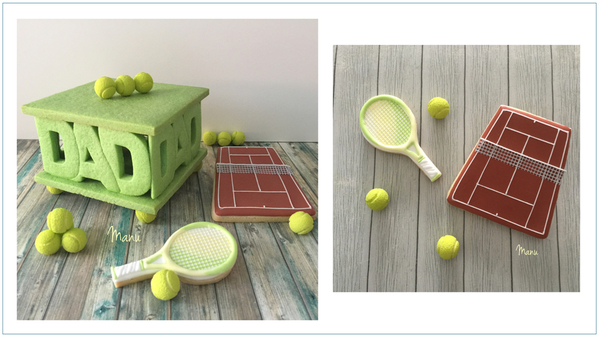
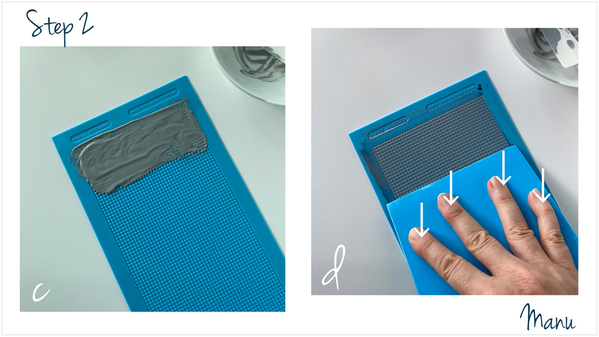
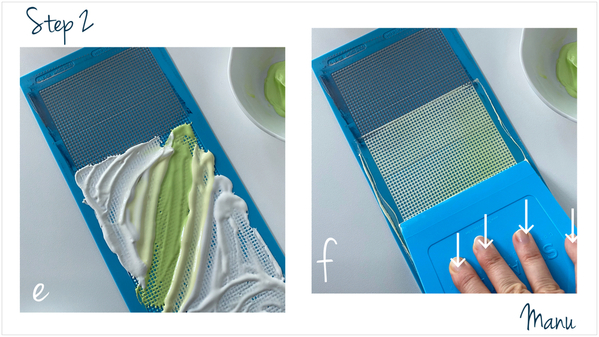
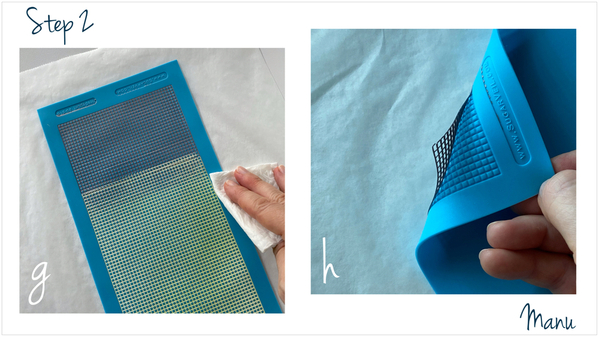
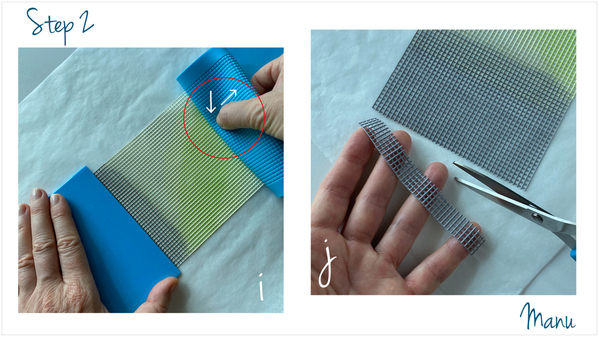

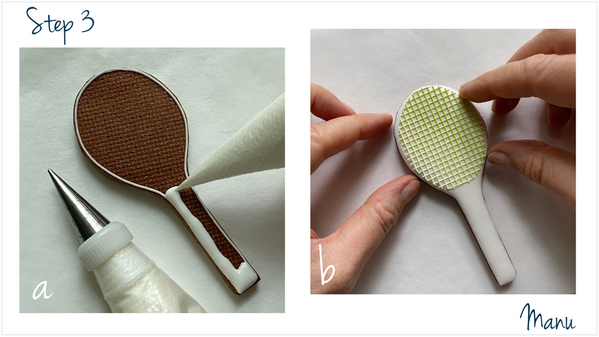

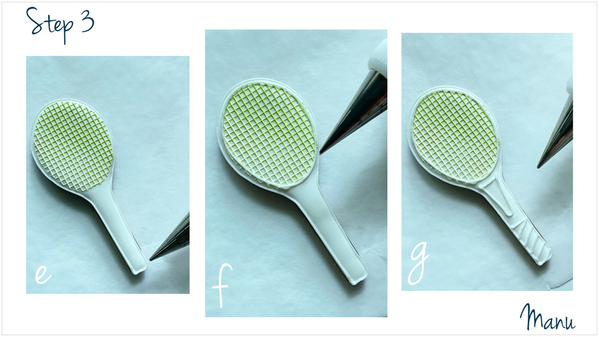

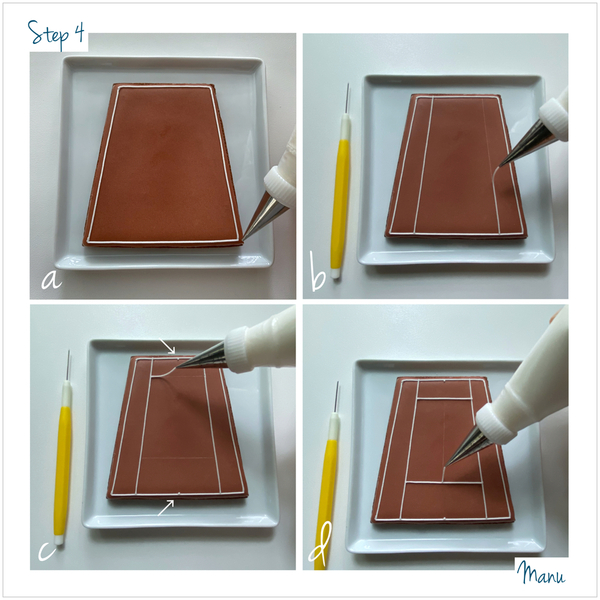


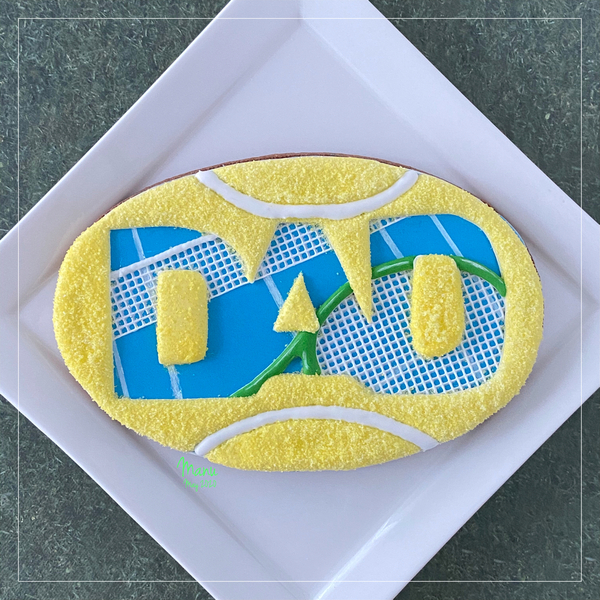


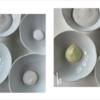




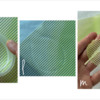

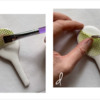

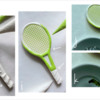


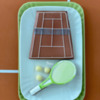

Comments (8)